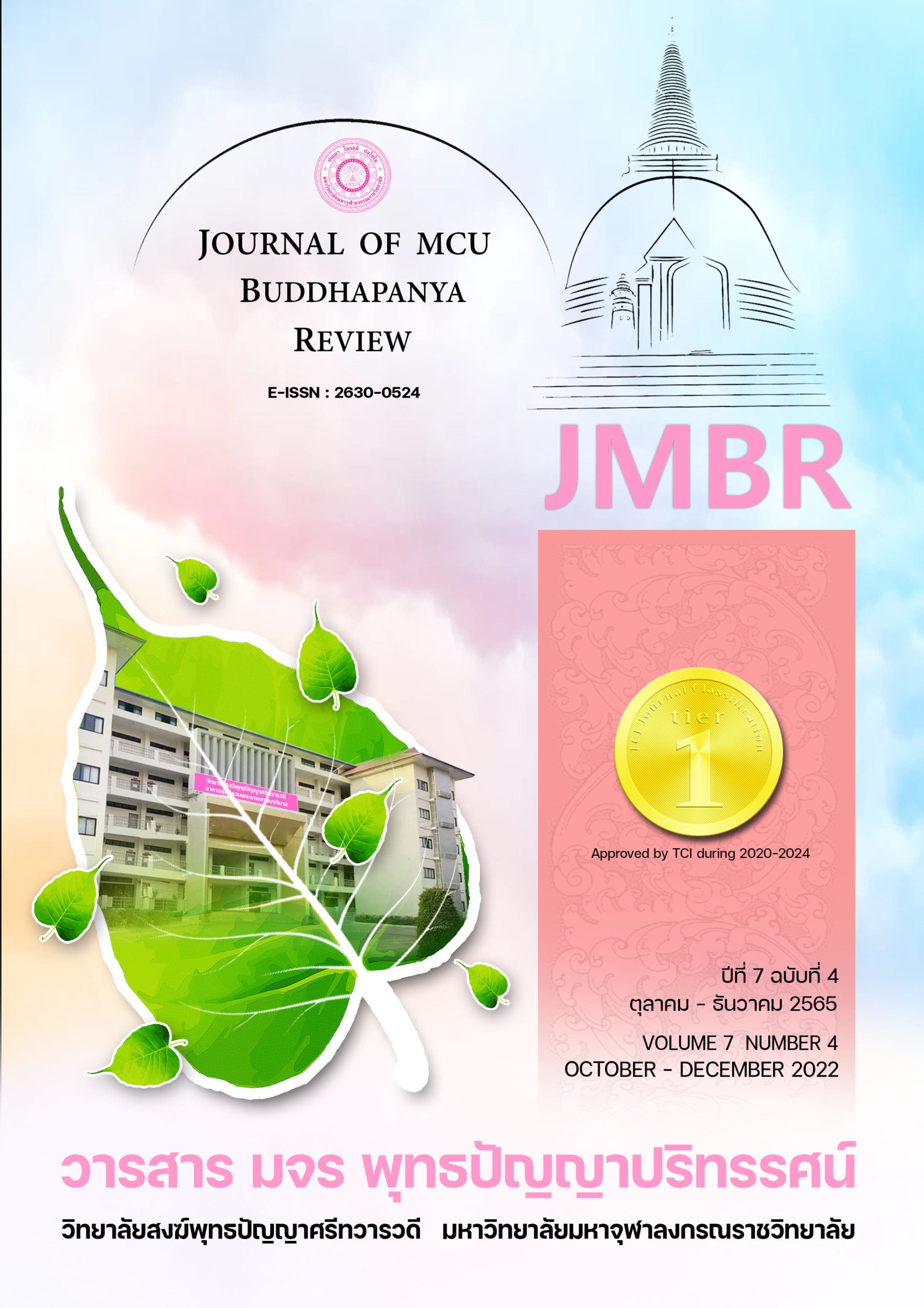อิทธิพลของปรากฏการณ์เคลื่อนไหวแสวงหาอดีตที่มีต่อการสร้างสรรค์ จุดหมายปลายทางการท่องเที่ยวมรดกแบบฮิพ
คำสำคัญ:
ปรากฏการณ์เคลื่อนไหวแสวงหาอดีต, จุดหมายปลายทางการท่องเที่ยวมรดกแบบฮิพ, แนวคิดย้อนอดีต, เจริญกรุงบทคัดย่อ
บทความวิจัยนี้มีเป็นการวิจัยเชิงคุณภาพ ใช้แนวคิดการเคลื่อนไหวแสวงหาอดีต (retro movement) แนวคิดการตลาดย้อนยุค (retro marketing) และแนวคิดย้อนอดีต (retro concept) เป็นกรอบการวิจัย พื้นที่วิจัยคือ แหล่งท่องเที่ยวและชุมชนในพื้นที่ย่านถนนเจริญกรุง กลุ่มตัวอย่าง คือ ผู้ประกอบการในย่านเจริญกรุง ผู้อยู่อาศัยในย่านเจริญกรุง และนักท่องเที่ยวฮิปสเตอร์ จำนวนกลุ่มละ 10 คน ใช้วิธีการคัดเลือกแบบเจาะจง เครื่องมือที่ใช้ในการวิจัยมี 2 ชนิด คือ 1) แบบคัดกรองกลุ่มตัวอย่างนักท่องเที่ยวฮิปสเตอร์ 2) แบบสัมภาษณ์แบบกึ่งโครงสร้าง วิเคราะห์ข้อมูลโดยใช้การวิเคราะห์เนื้อหาแล้วเขียนบรรยายเชิงพรรณนา
ผลการวิจัยพบว่า
อิทธิพลของปรากฏการณ์เคลื่อนไหวแสวงหาอดีตส่งผลต่อทั้งภาคอุปสงค์และอุปทานการท่องเที่ยวที่ส่งเสริมให้ย่านเจริญกรุงเป็นจุดหมายปลายทางการท่องเที่ยวมรดกแบบฮิพ
- ผลการศึกษาอิทธิพลของปรากฏการณ์เคลื่อนไหวแสวงหาอดีตจากมุมมองของผู้ประกอบการ พบประเด็นการสร้างสรรค์จุดหมายปลายทางการท่องเที่ยวมรดกแบบฮิพ ดังนี้ 1) การเข้ามาของนักท่องเที่ยวกลุ่มใหม่ 2) การลงทุนและการขยายตัวของธุกิจด้านการท่องเที่ยว 3) การปรับตัวของภาคธุรกิจเพื่อตอบสนองต่อการท่องเที่ยว 4) การใช้แนวคิดย้อนอดีต (retro concept) เพื่อสร้างความแตกต่างทางสินค้าและบริการ 5) การส่งเสริมภาพลักษณ์และการประชาสัมพันธ์ธุรกิจ
- ผลการศึกษาจากมุมมองของผู้อยู่อาศัย พบประเด็นการสร้างสรรค์จุดหมายปลายทางการท่องเที่ยวมรดกแบบฮิพ ดังนี้ 1) การเปลี่ยนแปลงทางด้านเศรษฐกิจของพื้นที่ 2) การเปลี่ยนแปลงขององค์ประกอบทางกายภาพในพื้นที่ 3) ความตระหนักในคุณค่าเอกลักษณ์ของย่านที่ดึงดูดใจนักท่องเที่ยว 4) ความปรารถนาที่จะรวบรวมและสืบทอดเรื่องเล่าของพื้นที่
- ผลการศึกษาจากมุมมองของนักท่องเที่ยวฮิปสเตอร์ พบประเด็นการสร้างสรรค์จุดหมายปลายทางการท่องเที่ยวมรดกแบบฮิพ ดังนี้ 1) การรับรู้สำนึกถิ่นที่แห่งรอยอดีต 2) การรับรู้หรือเป็นพยานในการเปลี่ยนแปลง 3) การรับรู้ในการขยายตัวของพื้นที่สร้างสรรค์ 4) การรับรู้ในศักยภาพของพื้นที่ในการเติมเต็มความรู้สึก องค์ความรู้ที่ได้จากงานวิจัยนี้สามารถนำไปใช้ในการพัฒนาแหล่งทรัพยากรมรดกในด้านของการนำเสนอคุณค่าของมรดกวัฒนธรรมในรูปแบบที่ผสมผสานความร่วมสมัยที่ตอบสนองต่อนักท่องเที่ยวกลุ่มเฉพาะภายใต้บริบทของการเคลื่อนไหวแสวงหาอดีต
เอกสารอ้างอิง
Amsden, B., Guldbrandsen, T., & Okrant, M. (2010). Reinventing "retrotels": using engaged scholarship to market nostalgia tourism in rural New Hampshire (Vol. p-94, pp. 257-261).
Brown. (1999). Retro-marketing: yesterday’s tomorrows, today! Marketing Intelligence & Planning, 17(7), 363-376. doi: doi:10.1108/02634509910301098
Dann, G. M. S. (1994). 'There's no business like old business': tourism, the nostalgia industry of the future. In W. F. Theobald (Ed.), Global Tourism (2nd ed., pp. 29-43). Oxford: Butterworth-Heinemann.
Dann, G. M. S. (1997). The green, green grass of home: nature and nurture in rural England. In S. Wahab, Pigram, J.J. (Ed.), Tourism Development and Growth: The Challenge of Sustainability (pp. 257-237). London: Routledge.
Fairclough, G. (2008). New Heritage, an introductory essay-People, landscape and change. In G. Fairclough, Rodney, Harrion., Schofield, John., Jameson, Jnr. John. H. (Ed.), The heritage ready (pp. 297-312). New York: Routledge.
Guffey, E. E. (2006). Retro: The Culture of Revival: Reaktion Books.
Handberg, K. (2014). There is no time like the past: Retro between memory and materiality in contemporary culture. Det Humanistiske Fakultet, Københavns Universitet.
Hewison, R. (1987). Hewison, R. (1987), The Heritage Industry: Britain in a Climate of Dec¬line, Methuen, London. London: Methuen.
Lowenthal, D., & Lowenthal, P. E. D. (1985). The Past is a Foreign Country: Cambridge University Press.
Manager Online. (2016). Point out 11 street art spots by Thai and international artists. 2nd "Invasion" Art City Festival. Retrieved January 19, 2019, from https://mgronline.com/celebonline/detail/9590000010758
Phra Suthiratanabundit. (2019). Charoenkrung Road, Temples, Houses, Communities and Road of Changes. Nonthaburi; Nititham printing.
Prakitnonthanakarn, C. (2013). Retro Market in Nostalgia Tourism. TAT Review, 2(May-June). (In Thai)
Ramshaw, G., & Gammon, S. (2005). More than just Nostalgia? Exploring the heritage/sport tourism Nexus. Journal of Sport & Tourism, 10(4), 229-241. doi: 10.1080/14775080600805416
Schiermer, B. (2014). Late-modern hipsters: New tendencies in popular culture. Acta Sociologica, 57(2), 167-181. doi: 10.1177/0001699313498263
Smyth, R. (1990). Away from it All. Toronto Star, 27.
Terrabkk. (2018). "Charoenkrung", the main artery connecting the economic center of Silom - Sathorn – Yaowarat. Retrieved May 25, 2020, from https://www.terrabkk.com/articles/192492 (In Thai)
Thailand Creative and Design Center. (2017). Charoenkrung creative district. Bangkok; Thailand Creative and Design Center.
Timothy, D. J., & Boyd, S. W. (2003). Heritage Tourism: Prentice Hall.
Tolstad, I. (2006). " Hey hipster! You are a hipster! " An examination into the negotiation of cool identities.
Tunbridge, J. E., & Ashworth, G. J. (1996). Dissonant Heritage: The Management of the Past as a Resource in Conflict: Wiley.
Vesey, C., & Dimanche, F. (2003). From Storyville to Bourbon Street: Vice, Nostalgia and Tourism (Vol. 1).
Waitt, G. (2000). Consuming heritage: Perceived historical authenticity. Annals of Tourism Research, 27(4), 835-862. doi: https://doi.org/10.1016/S0160-7383(99)00115-2
Walton, J. K. (2009). Prospects in tourism history: Evolution, state of play and future developments. Tourism Management, 30(6), 783-793. doi: https://doi.org/10.1016/j.tourman.2009.05.010
Weaver, D. B. (2011). Contemporary tourism heritage as heritage tourism: Evidence from Las Vegas and Gold Coast. Annals of Tourism Research, 38(1), 249-267. doi: https://doi.org/10.1016/j.annals.2010.08.007
Xie, P. F. (2006). Developing industrial heritage tourism: A case study of the proposed jeep museum in Toledo, Ohio. Tourism Management, 27(6), 1321-1330. doi: https://doi.org/10.1016/j.tourman.2005.06.010
Urry, J. (2002). The Tourist Gaze: SAGE Publications.
ดาวน์โหลด
เผยแพร่แล้ว
รูปแบบการอ้างอิง
ฉบับ
ประเภทบทความ
สัญญาอนุญาต
ลิขสิทธิ์ (c) 2022 วารสาร มจร พุทธปัญญาปริทรรศน์

อนุญาตภายใต้เงื่อนไข Creative Commons Attribution-NonCommercial-NoDerivatives 4.0 International License.



